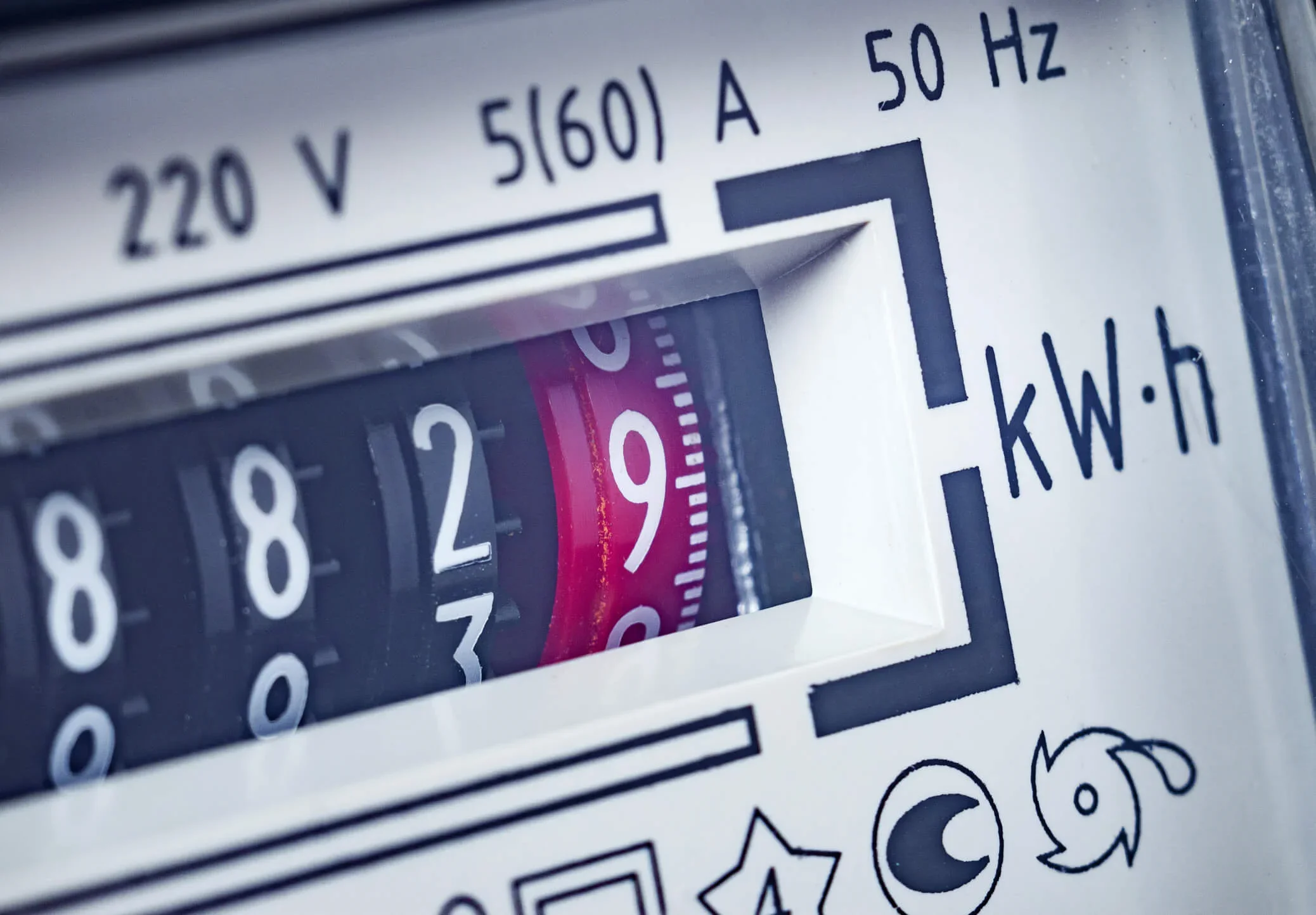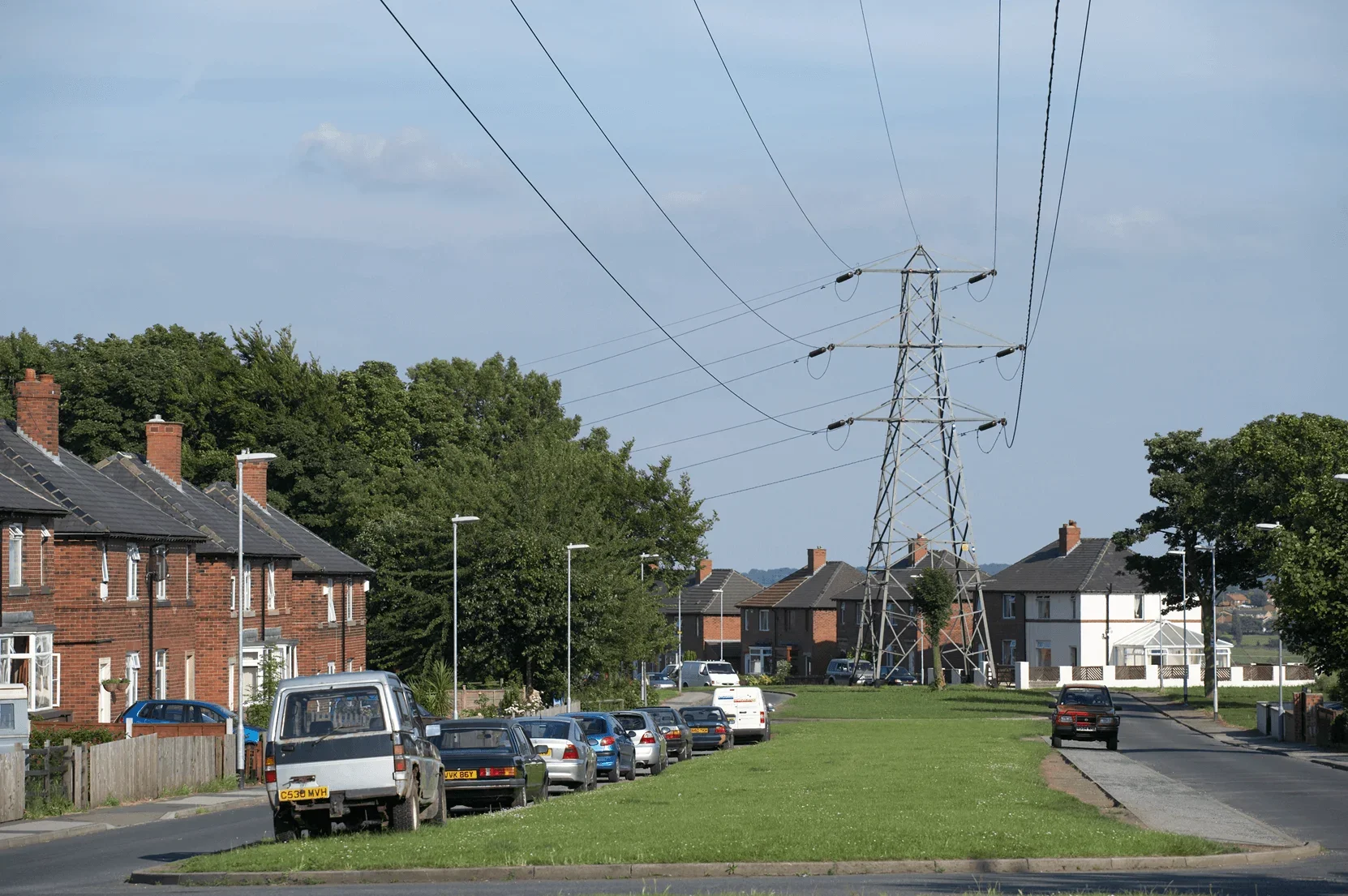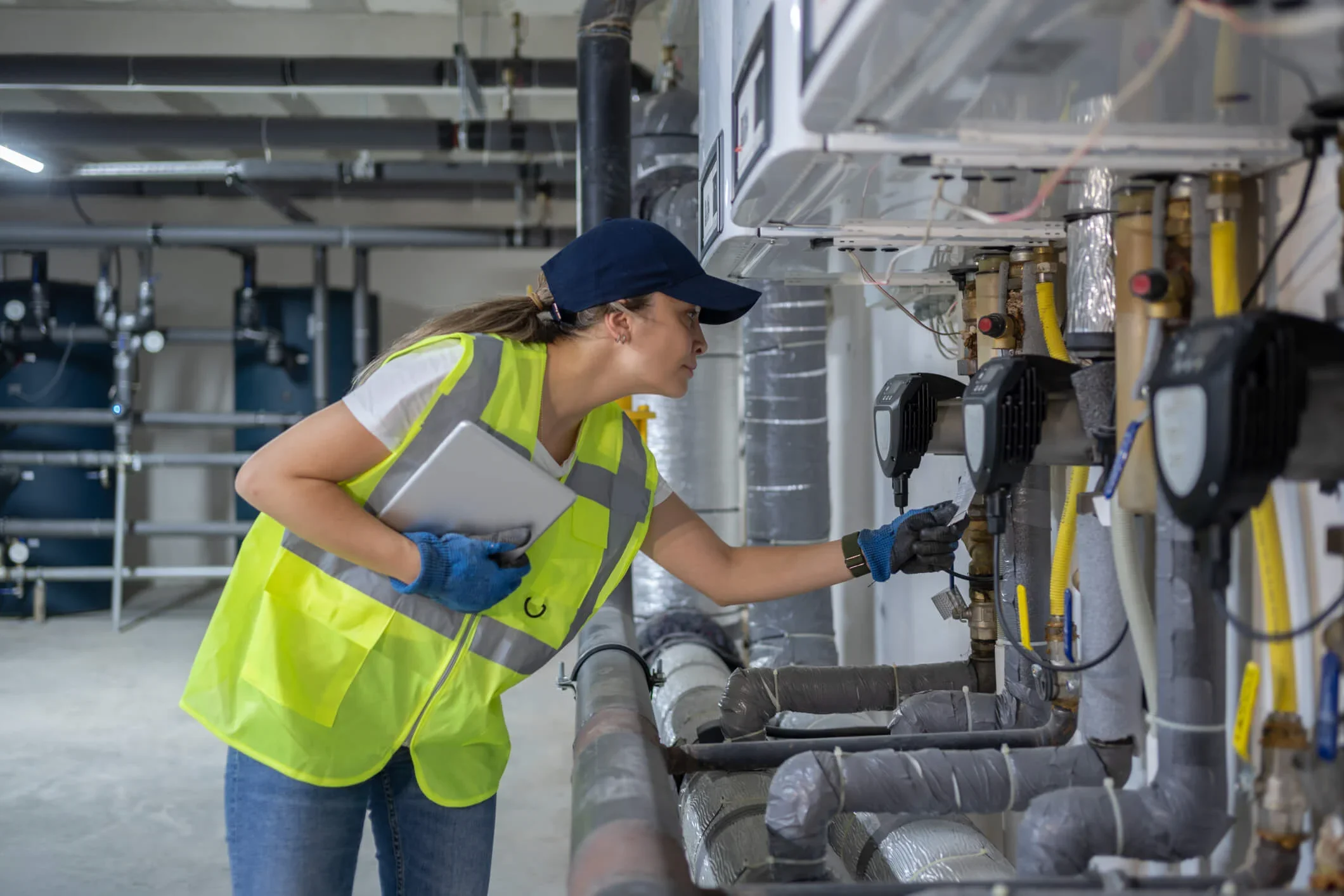BUSINESS ENERGY
Business energy meter installation: Your complete guide
Read time: 5 minutes
By Les Roberts, Business Energy Expert
29th July, 2025
If you're setting up a new business, moving to new premises, or upgrading your utilities, installing the right commercial energy meters for gas and electricity is essential for managing your usage and costs effectively.
This guide covers everything you need to know about business energy meter installation, including selecting the right type of meter, understanding installation processes, and key considerations for your new setup.

Why do businesses need energy meters?
Whether you need a new business electric supply or you're setting up a new commercial gas supply, your energy meters play a crucial role in billing and efficiency. If you have a high energy demand, you may need a certain type of meter for regulatory compliance.
Accurate billing
Without a properly installed meter, your business energy supplier will estimate your usage, which can result in:
- Overcharging, requiring time-consuming refund requests.
- Undercharging, which leads to unexpected debts that must be cleared before switching tariffs or suppliers.
Improved energy efficiency
Advanced meters, such as smart meters, provide detailed usage data to help your business track and reduce its consumption. This can help your business save money and reduce its environmental impact.
Regulatory compliance
If your business has a high energy demand that exceeds 100 kVA (kilovolts-ampere) at least three times a year, you must install a half-hourly meter to meet regulatory requirements. If your business has a peak demand of up to 70kVA in any half-hour period, then the installation is optional.
Enhanced sustainability
Reducing energy usage with accurate monitoring can help to improve your carbon footprint, enhance your business's public image, and contribute to a greener planet. It can also help cut your business energy bills.
Business gas meter installation
A business gas meter is essential for companies using gas for heating or operations. Let's take a closer look at whether your business needs a new meter and how to make sure your commercial gas meter installation is safe and efficient.
Do you need a new gas meter for your business?
If you use gas but your business property doesn't have an existing gas meter, you need to get one installed. The same applies if your property does have one fitted but it's faulty, inaccurate, or insufficient for your needs.
You'll also need to arrange for a new meter to be fitted if you're switching to a new commercial gas supply or you’re upgrading to a smart gas meter for more efficient tracking
Aside from safety and compliance, installing a new meter can offer the following benefits:
- Precise billing: Accurate gas readings eliminate billing errors
- Energy insights: Track and optimise your gas consumption
- Environmental impact: Reduced usage means a smaller carbon footprint
How to get a gas meter installed in the UK
Here’s a step-by-step guide to getting a gas meter installed:
1. Check for an MPRN (Meter Point Reference Number)
Your MPRN is a unique number (usually 6–10 digits) that identifies the gas supply point at your property. For existing properties, your MPRN can be found on a gas bill or listed on paperwork from the National Grid. If you’re unsure of your MPRN, contact XOSERVE on 0870 608 1524 or use the Find My Supplier service.
2. Determine the gas supply status
If there's no gas supply at your business premises, contact National Grid to confirm connection requirements. It usually takes around 15 working days to verify connection details.
3. Plan the installation date
Once you know the extent of the work, it's time to set a date for installation. Once a gas contract is agreed upon, most suppliers can complete installation within five working days. Always use a Gas Safe registered engineer.
Gas meter installation costs vary depending on your requirements. For instance, a new installation will usually cost more than a meter replacement. If you're switching to a smart meter, your supplier may fit one for free.
4. Evaluate your gas demand
Different businesses have different gas demands. For instance, the energy demand of a restaurant with several ovens and a large dining area will usually be greater than that of a small coffee shop. Your Gas Safe registered engineer can assess your appliances to determine maximum hourly gas usage.
5. Choose the meter location
If your property has indoor gas pipelines, an internal meter will probably be most suitable. Although its location will in part be decided by the current set-up of pipes and appliances, make sure it's fitted somewhere accessible.
If there's no room for an internal meter or due to safety regulations, space constraints, your business has a medium-pressure gas supply, or if the gas pipes entering the building are plastic, you'll probably need to have a meter fitted outside the property. For safety reasons, external meters need protective housing, which is typically supplied by your provider.
6. Understand service pressure requirements
Confirm with your pipework installer if your supply pressure is low, medium, or high. High-pressure systems may have higher installation costs, while medium-pressure systems may need an external meter.
Business electricity meter installation
Setting up the right business electricity meter is vital for managing energy consumption and controlling costs, whether you’re arranging a new business electricity connection or replacing an outdated system. Here's all you need to know:
Do you need a new business electricity meter?
If your current property doesn't have an electricity meter or if you're switching to a new business electric supply with specific tariff requirements (such as a time-of-use tariff or half-hourly meter), you'll need to have a new one installed.
You'll also need a new electricity meter if your existing commercial electricity meter is faulty, outdated, or unsuitable
Types of business electricity meters
Electricity meters come in a variety of shapes and functions, and the one best suited to you will depend on your energy requirements and the tariff you’re on. The first thing to consider is the type of rate you’ll be on:
Single-rate meters
Charge a flat rate for electricity usage. Suitable for businesses operating during standard hours, such as offices or retail stores
Two-rate meters
Also known as time-of-use meters, these separate rates for peak and off-peak times, ideal for businesses like restaurants operating late hours
Three-rate meters
Include weekend rates, making them perfect for businesses such as pubs or clubs
Half-hourly meters (HH)
Half-hourly meters send detailed energy usage readings every 30 minutes. Required for businesses with a maximum energy demand exceeding 100kW
Smart meters
Smart meters send usage data to your supplier, ensuring accurate billing without the need for manual readings
Prepayment meters
Prepayment meters allow businesses to monitor and control their energy usage by paying in advance for electricity or gas, helping to manage budgets and avoid unexpected bills. Rates on prepayment meters are usually higher than on fixed contracts paid using a credit meter.
How to install a new commercial electricity meter
If you’re planning a commercial electricity meter installation, follow these steps:
1. Check your MPAN (Meter Point Administration Number)
Your MPAN is a unique 21-digit number that identifies the electricity supply point at your premises. It is sometimes called a “Supply Number” or “S Number.” You’ll usually find your MPAN on your electricity bill. For new premises, use the Energy Networks Association to identify your current network provider.
2. Determine energy requirements
Before you can get a new meter fitted, you need to work out if your business needs a single-phase or three-phase supply. Most businesses need a single-phase, which is suitable for businesses with basic energy needs, like lighting and heating
If your business uses heavy machinery, it'll probably need a three-phase supply.
3. Choose a meter type
With all the above information to hand, speak with your supplier to work out which is the right commercial meter for your tariff and energy usage. For instance, if you run a takeaway that uses a lot of energy at night and weekends, a three-rate time-of-use meter moght be best.
Plan the installation date
If you need a new business electricity connection, arrange this at least one month before your planned operations. You'll need to allow 10–15 days for meter installation, or up to 12 weeks for a completely new supply line
How to read your business gas and electricity meters
There’s no single answer about how to take your electric meter reading. It’s the same for gas meter readings too. That’s because there are different types of meter display – dial energy, LCD and mechanical display. But don’t worry, all these meters are easy to read when you know how.
Dial Display
There are two types of dial display energy meters. If yours has a ‘10,000’ label on the left side, you only need to pass on the first five digits of the displayed number.
If your meter is labelled ‘100,000’, pass on all six digits to your provider. With dial display meters there can often be two numbers provided. If the dial is not between 9 and 0, you should note down the lower number. If it is between 9 and 0, you’ll need the higher number.
LCD Display
Simply note down the number shown on the screen and pass this on to your provider. If you’re on a multi-rate system, you’ll need to use the keypad to scroll to the required recording.
Mechanical Display
It couldn’t be simpler; all you need to do is record the number on the screen in full. If you have a multi-reader, take the number from each screen and pass these on to your energy supplier.
If you’re still unsure about reading your electric meter, or gas meter, feel free to get in touch with our energy experts who can help you further.
What to do with your business gas and electricity meter readings
Now you know how to read your energy meters, you’ll need to inform your supplier of your usage.
The most convenient way to do this is to download your supplier’s smartphone app where you can input your details when required.
As well as via a smartphone app, you can also submit your meter reading in the following ways:
- By phone
- Via your energy supplier’s website
- Automatically, with a smart meter
If you can do without the hassle of taking and sending meter readings to your supplier, it might be worth getting a smart meter. This will send your usage automatically and should guarantee accurate billing.
What are the costs and considerations of new meter installations?
Gas meter installation cost
The commercial gas meter installation cost depends on factors like:
- The type of meter
- Service pressure requirements
- Location and connection complexity
Discuss these details with your supplier or installer to receive an accurate quote.
Electricity meter installation cost
While many suppliers offer free upgrades to smart meters, installation costs for commercial electric meter installation can vary for bespoke setups.
What are the benefits of upgrading to modern meters?
There are a few benefits to upgrading to a modern gas or electricity meter at your business premises, including:
- Cost savings - Accurate readings prevent overpayments and highlight potential energy savings
- Energy efficiency - Smart meters provide real-time data to track and reduce usage
- Legal compliance - Certain businesses are required to install specific meters, like HH meters for high-demand premises
- Sustainability - Reduced energy consumption helps businesses meet environmental goals
Whether you’re arranging a new business electric supply or a commercial meter installation, planning ahead and consulting with your energy supplier ensures a smooth process.
For expert advice and assistance with your meter installation, contact your business energy supplier or a certified professional today. If you’re ready to switch to a new supplier, give our energy experts a call on 0800 140 4667.
Is it time to compare business energy quotes and switch?
Take the hassle out of sorting your next energy deal. We compare from a panel of suppliers. You choose the rates that are right for your business.
By clicking ‘COMPARE TODAYS RATES’ you agree for us to search your current energy supplier and usage though industry held data. Enter manually
Our experts share essential knowledge on business energy
All related guides
View all energy guides
- A complete guide to business energy for offices
- A complete guide to business energy for restaurants
- A complete guide to business energy for shops
- How to get a business energy audit to save money and boost efficiency
- A complete guide to business energy bills
- Business energy brokers – everything you need to know
- What are no standing charge business energy tariffs?
- Business energy efficiency: how to save energy at your business
- Change of Tenancy - Moving your business premises
- Commercial property landlord energy advice
- Energy performance certificate for business
- A complete guide to half hourly electricity meters
- How to pay your business energy bills to save money and avoid late fees
- How your business credit score affects your energy deals
- Compare large and industrial business energy prices
- What are renewable energy certificates and REGOs for small businesses?
- Renewable Energy for Business
- A guide to smart meters for business
- Commercial solar panel electricity
- A business guide to time-of-use energy tariffs
- Business energy tariffs explained
- Everything you need to know about the Smart Export Guarantee (SEG)
- Compare small business & micro business energy prices
- Compare business gas and electricity suppliers
- What is the Climate Change Levy?
- Business energy meter installation: Your complete guide
- Multi-site meters and business energy management
- How much is VAT on business energy?
- What happens when your energy supplier goes bust?
- What is a letter of authority (LoA) for business energy?
- What is business microgeneration?
How to switch business energy suppliers with MoneySuperMarket
We can switch your business to a better energy deal in three simple steps
1
We find your details
Just enter your business address and we'll use industry data to accurately find and understand your energy usage.
2
We talk through your quotes
One of our UK-based energy experts will search our supplier panel and give you a call to talk through your quotes.
3
You choose the deal you want
With all the information to hand, you choose the deal that best suits your business and we’ll handle the switch for you.
Compare today’s business energy rates
By clicking ‘COMPARE TODAY'S RATES’ you agree for us to search your current energy supplier and usage though industry held data. Enter manually







